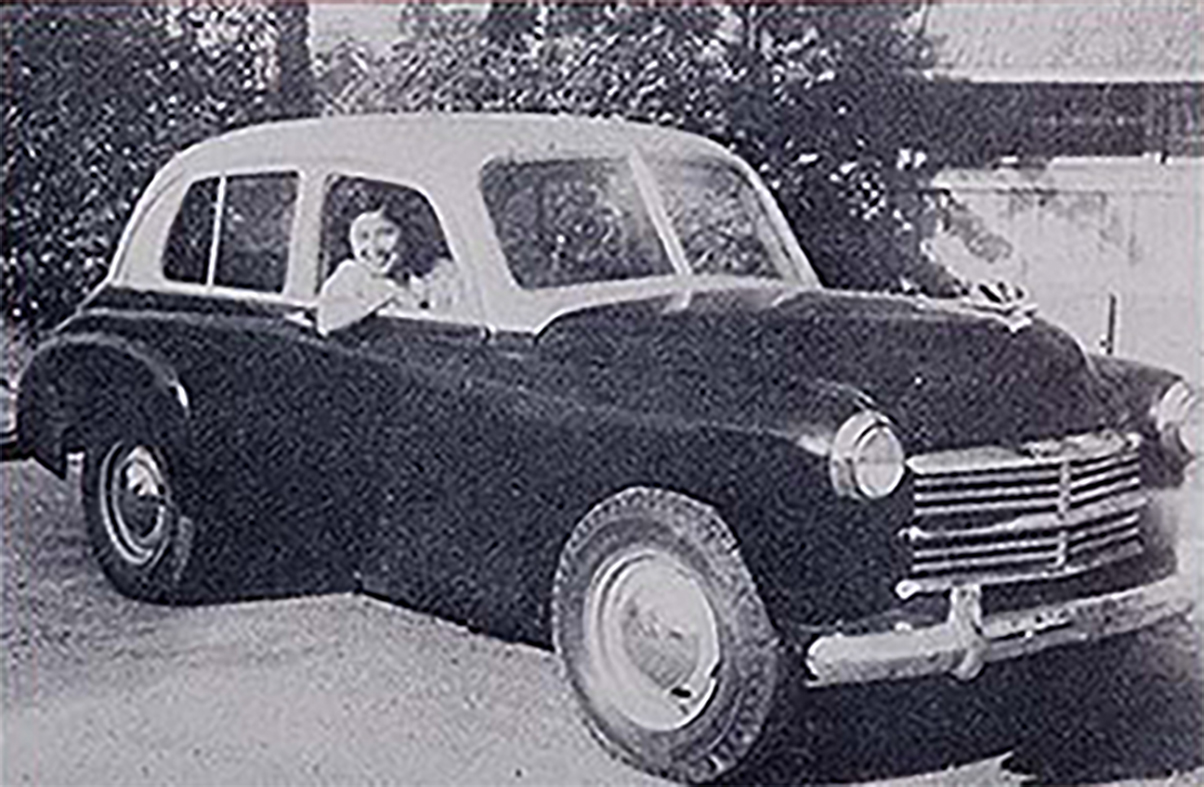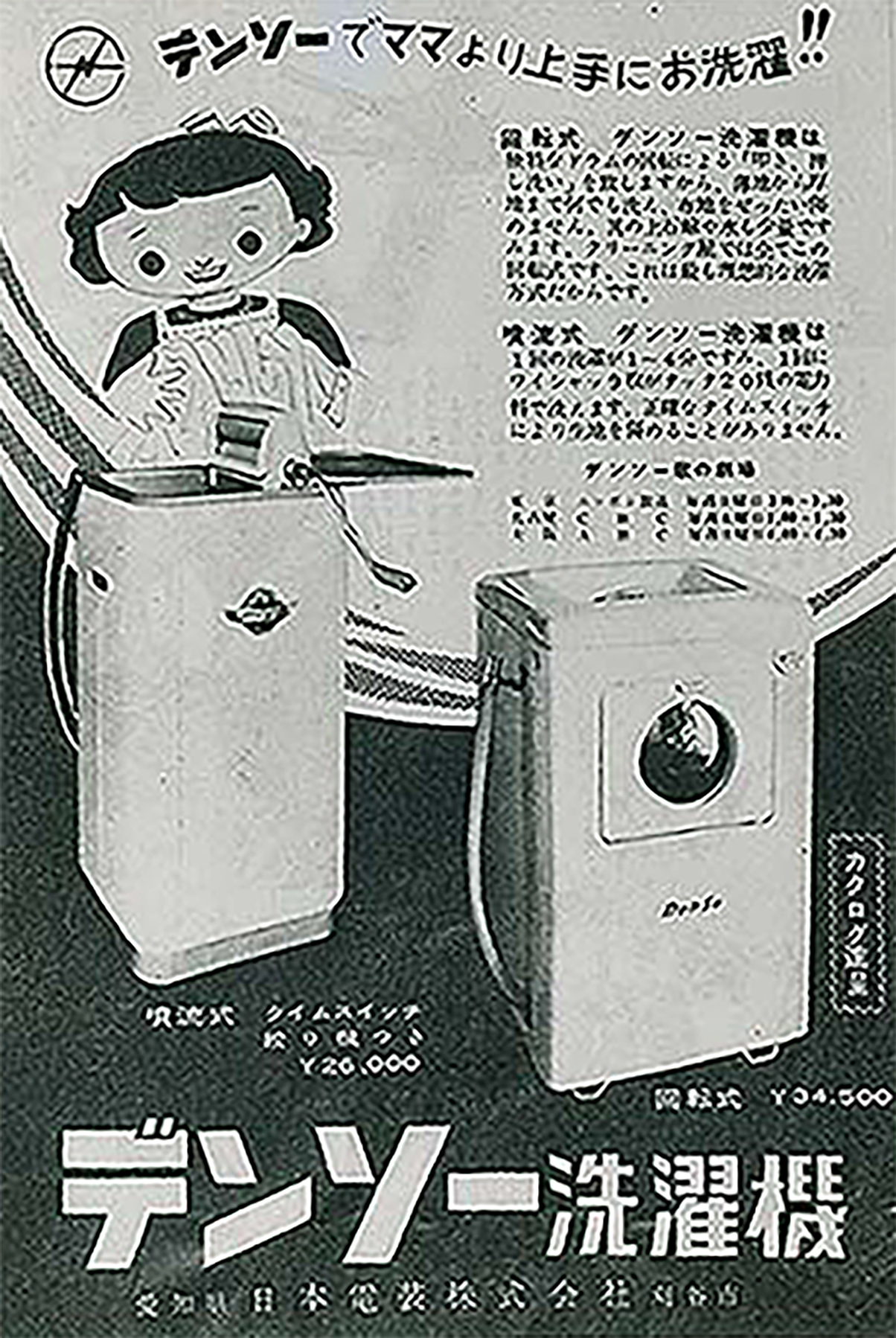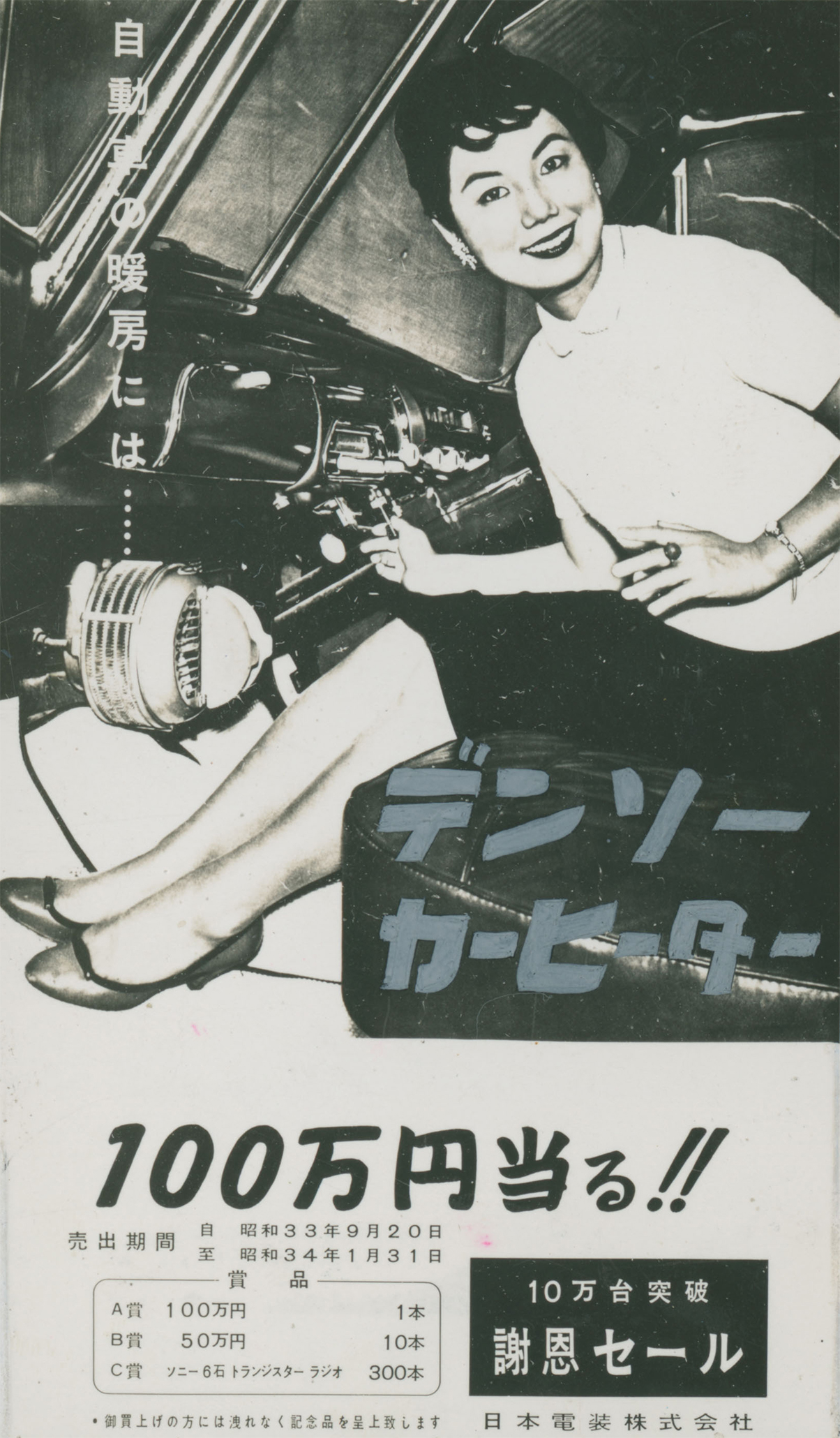2. Commencement of Operations
1949-
(2) Exploration of New Production Items
- 1950
- The future of the automotive business remained uncertain, prompting the company to venture into various other projects. In 1950, the company released electric vehicles and electric washing machines. Despite the trial and error involved, the company remained committed to innovation and uniqueness, resulting in the development of superior products.
Post-war, the company was designated as a compensation preservation factory by the Occupation forces, primarily because its predecessor factory produced aircraft oil coolers, a military supply, during the war. This designation brought constant fear of equipment confiscation. Moreover, there was a looming uncertainty about the very survival of the automotive industry. The company needed to take proactive measures.
From its early days, the company engaged in the production of various items. The trials and tribulations experienced in developing new products, exploring sales channels, and innovating sales methods during this period became invaluable lessons that later contributed significantly to the company's domestic sales growth.

During this era, the gasoline shortage that began during the war was worsening, and most vehicles on the streets ran on charcoal, which was highly inconvenient. The company saw potential in electric vehicles and began development. In 1950, the EA-type electric vehicle “Denso-Go” was released. The company manufactured all major functional components of the vehicle, except for the battery, making it essentially an in-house electric vehicle.
There were internal disagreements about electric vehicles, with some criticizing the company for possibly looking too far ahead. Despite the material shortages, the company continued its research and development efforts. As a result, within less than nine months from planning to test runs, 50 units were released. The vehicle could accommodate six passengers, reached a top speed of 43 km/h, and had a range of 195 km on a single charge.
- Deep DiveThe Significance of Electric Vehicles
- The company’s venture into electric vehicles was driven by the determination of its engineers to tackle challenging problems and contribute to solving societal issues. Despite the eventual cessation of electric vehicle production due to the lifting of gasoline rationing, the technological advancements made during this period laid a crucial foundation for future innovations.
The expertise gained from electric vehicle development was later applied to the creation of battery-powered forklifts starting in the 1970s. More recently, this knowledge has been instrumental in the development of contemporary electric vehicle (EV) components.

The company sought to leverage the technology and facilities developed for electric vehicles to create new products in line with the current trends. They turned their attention to electric washing machines, drawing on their experience in producing motors for washing machines. In May 1950, the company released a drum-type electric washing machine. This rotary type was gentle on fabrics and could handle large loads, making it the top seller nationwide for a period.
However, as large home appliance manufacturers with diverse product lines and strong sales capabilities began to assert their dominance, and with the automotive market showing signs of recovery, the company decided to focus on automotive parts. In 1958, the electric washing machine business was transferred to Aichi Kogyo (now AISIN CORPORATION).
- Deep DiveThe Significance of Electric Washing Machines
- Although the company eventually divested its electric washing machine business, the venture provided invaluable lessons in sales—a field in which the company had no prior experience. Through this business, the company learned the importance of having its own sales network.
These insights proved to be crucial groundwork for the company's later success in the aftermarket for automotive parts. The experience gained from selling electric washing machines laid the foundation for the company’s growth in sales-intensive automotive accessories, such as car air conditioners.

In 1952, the company developed car heaters. These were rectangular hot water-type heaters that circulated radiator water through a radiator core divided into four or six sections and blew hot air into the cabin using a fan. In 1954, the company released a round Bosch-type heater with improved performance. Although some questioned the need for heating systems in cars at the time, the company foresaw the expansion of the automotive market and increased production of car heaters. By the late 1950s, the company had established a strong sales and service network, and its high-performance, high-quality car heaters dominated the market.
- Deep DiveThe Significance of Car Heaters
- Our commercial sales activities began with the sale of car heaters, not as direct supplies to automobile manufacturers, but as optional accessories marketed to the transportation industry. The Bosch-type car heater exceeded sales expectations, prompting us to commit fully to developing the aftermarket for dealer-option accessories.
Through proactive sales efforts, including collaboration with Toyota Motor Sales, we maintained an overwhelming market share to the extent that “DENSO for car heaters” became a well-known phrase.
The development of meters began in 1949, following the dissolution of the instrument research laboratory at Toyota Motor Corporation's Kamata plant. The company accepted three researchers from the laboratory, inherited their instrument technology, and produced its first meter product, an ammeter for tricycles, in 1950. The meter business subsequently incorporated advanced technologies as electronics and information technology progressed, expanding its product range and becoming one of the company's core businesses, achieving significant growth.
- Deep DiveThe Significance of Meters
- Following the production of the ammeter for tricycles, our company developed combination meters in the early 1950s. These meters integrated various instruments such as speedometers, fuel gauges, water temperature gauges, and oil pressure gauges into a single module. By the late 1960s, the electrification and digitization of meters had advanced significantly, leading to the introduction of digital meters utilizing electronics technology in the 1970s.
The importance of meters continued to grow with the development of Intelligent Transport Systems (ITS) and multimedia technologies. The meter business became increasingly significant as a key technological component of advanced products. Our company achieved global excellence in this field entirely through its own efforts, without forming technical alliances or receiving external assistance.